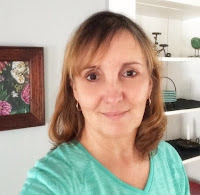 |
| Come Out, Come Out, Wherever You Are |
We create a character often by piecing together various personalities of people we know, sprinkling in generous amounts of seasonings such as humor, intrigue and adventure; and known or unknown to us, adding a dollop of ourselves.
My brush with this subject, which amounts to a revealing personal experience and a Google search for this post, has sparked a desire for further research. What is alter ego? How can it best be used in creating characters?
A Sampling of Definitions
- Webster's Collegiate: A second self; a trusted friend; the opposite side of a personality.
- American Heritage: Another aspect of one's personality.
- Wikipedia: A second self, which is believed to be distinct from a person's normal or original personality.
- Dr. Carolyn Kaufman: It is normal to have multiple ego states. Everyone has them. Dr. Kaufman's example is the "you" who, at Thanksgiving dinner with your in-laws, acts different than the "you" out on the town with friends. These two "you's" are different sides or facets of you. She goes on to write that it's even normal for your various ego states to have different names, such as Mrs. Uptown at work, and Kitty with friends.
- Problem ego states: Dr. Kaufman's book, The Writer's Guide to Psychology: To Write Accurately about Psychological Disorders, Human Behavior, and Clinical Treatment, provides information on borderline personality, dissociative identity disorder, mood and anxiety disorders, treatments, therapies, and character-building. She states on her blog that she wrote this book to aid writers in understanding the personality so their characters' behavior is accurate. An excellent example of dissociative identity disorder, or DID, is portrayed on the Showtime show, United States of Tara (final episode: June 20, 2011). Toni Collette stars as a suburban housewife and mom living with DID. In the show, her family never knows who will greet them when they come home: Tara herself, or "T," a flirty teenager; Buck, a beer-swilling Vietnam vet; Alice, a perfect TV 1950's mom, or other alter egos.
The Fight against Good and Evil: Living a Double Life
Superheroes top the list of those who fight the good fight.
- Superman/Clark Kent: Appearing as a "mild-mannered" newspaper reporter allowed Superman to live among the people of Metropolis without giving away his identity.
- Batman: Disguised himself to fight crime.
- Spider-Man/Peter Parker: Peter takes on the role of "vigilante" after going on a high school science trip and getting bitten by a radioactive spider; and suddenly becomes stronger, faster, and can shoot webs, climb buildings, and jump great distances.
Scottish author Robert Louis Stevenson created Dr. Jekyll and Mr. Hyde in the late 1800s. His story was based on recurring nightmares he had of living two opposing lives. The story actually portrays a borderline personality, according to Wisegeek.com. Due to a scientist consuming a substance in an experiment, Dr. Jekyll became "congenial and moral," while his alter ego, Mr. Hyde, was "wicked and unmoral."
A Sampling of Alter Egos in Film
- Black Swan: The protagonist Nina Sayers, played by Natalie Portman, faces her alter ego, the character of the Black Swan.
- Breaking Bad: The protagonist, Walter White, a high school chemistry teacher, uses his alter ego, Heisenberg, to become a player in the drug world.
- South Park: Butters Stotch created an evil alter ego, Professor Chaos, out of frustration.
- Our Gang: In the episode, "Mama's Little Pirate," Spanky gets in trouble, gets sent to his room, and he talks to his alter ego.
A young man I went to high school with (to me he'll always be the popular guy I remember) didn't find out he's an artist until later in life; had no clue. As for my discovery, it came as a surprise, not from writing, but from a quartet I took part in. We sang popular songs for events in our community, some humorous. Our guitar player's wife would patiently listen to our practices (she had no choice--we took over her living room). I made a joke once and saw that she genuinely thought it was funny. That did it. I wound up as the group comedian and since then have continued to develop this humorous side with friends and in my books.
Dr. Kaufman writes in her blog that some people are more aware of these different ego states than others, especially if they play very diverse roles in life. I have come to understand that although you infuse each of your characters with their own, unique personality, each of these aspects are part of you. Just as it's a good idea to create a profile for each of your characters, then, why not profile your alter egos as they reveal themselves?
Sources: Photo by Linda Wilson; Urbandictionary; United States of Tara.
Next month: Writers: Pin Down Your Alter Ego(s)

















